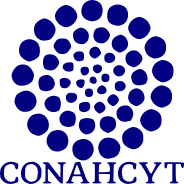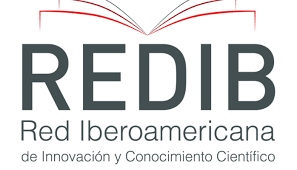Chemical characterization of the volatiles of Tagetes nelsonii.
Keywords:
Tagetes, Tagetes nelsonii, terpenes, SPME, GC-MS.Abstract
Species of the genus Tagetes (Astereceae) have shown important medicinal and biological properties. Many Tagetes species are native from Mexico, however, there are few studies on their volatiles. The objective of the present study is to characterize the volatiles of Tagetes nelsonni Greenm commonly known as “Chik chawa”, which is a plant used in some regions of Chiapas State, Mexico for medicinal purposes. Our work was focused to extract and to identify the T. nelsonii volatiles using Solid Phase Microextraction (SPME) and Gas Chromatography-Mass Espectrometry (GC-MS) respectively. The compounds identified are a mixture of terpenes. The major volatile components are (E)-β-tagetone (43-9%) and dihydrotagetone (20.7%), followed by trans-β-ocimene, eucaliptol, limonene and β-cubebene. Tagetes nelsonni contains fragant compounds as α and β-pinene, trans-β-ocimene, limonene, linalool, (E) and (Z)-tagetones, dihydrotagetone and cis and trans-tagetenone with potential to be used for cosmetic, pharmaceutical purposes and to help to control insect pest of plant problems.
References
Armas, K., Rojas, J., Rojas, L., & Morales, A. (2012). Comparative study of the chemical composition of essential oils of five Tagetes species collected in Venezuela. Natural product communications. 7, 1225-6.
Ball-Coelho, B., Bruin, A. J., Roy, R. C., & Riga, E. (2003). Forage pearl millet and marigold as rotation crops for biological control of root-lesion nematodes in potato. Agronomy Journal, 95(2), 282–292. https://doi.org/10.2134/agronj2003.0282
Camarillo R, G., Ortega A, L. D., Serrato C, M. A., & Rodríguez H, C. (2009). Actividad biológica de Tagetes filifolia (Asteraceae) en Trialeurodes vaporariorum (Hemiptera: Aleyrodidae). Revista Colombiana de Entomología, 35(2), 177–184.
Carod-Artal, F. J., & Vázquez-Cabrera, C. (2007). An anthropological study about headache and migraine in native cultures from Central and South America. Headache, 47(6), 834–841. https://doi.org/10.1111/j.1526-4610.2007.00778.x
Cestari, I. M., Sarti, S. J., Waib, C. M., & Branco Jr., A. C. (2004). Evaluation of the potential insecticide activity of Tagetes minuta (Asteraceae) essential oil against the head lice Pediculus humanus capitis (Phthiraptera: Pediculidae). Neotropical Entomology, 33(6), 805–807.
Cropwatch. 2006. Tagetes oil phototoxicity. Further clarifications. http:// www. cropwatch. org/tageteclarify.html; última consulta: 15.VI.2011.
Díaz-Cedillo, F., & Serrato-Cruz, M. A. (2011). Composición del aceite esencial de Tagetes parryi A. Gray. Revista Fitotecnia Mexicana, 34(2), 145–148.
Díaz-Cedillo, F., Serrato-Cruz, M. A., Arce-Montoya, M., & León-De La Luz, J. L. (2012). Composition of essential oil of Tagetes lacera, endemic plant from Baja California Sur, Mexico. Revista Mexicana de Biodiversidad, 83(2), 543–547.
Díaz-Cedillo, F., Serrato-Cruz, M. A., de la Cruz-Marcial, J., Sánchez-Alonso, M. G., & López-Morales, V. (2013). Compuestos mayoritarios del aceite esencial en órganos de una población de Tagetes coronopifolia Willd. Revista Fitotecnia Mexicana, 36(4), 405–411.
Eguaras, M. J., Fuselli, S., Gende, L., Fritz, R., Ruffinengo, S. R., Clemente, G., Gonzalez, A., Bailac, P., & Ponzi, M. I. (2005). An in vitro evaluation of Tagetes minuta essential oil for the control of the honeybee pathogens Paenibacillus larvae and Ascosphaera apis, and the parasitic mite Varroa destructor. Journal of Essential Oil Research, 17(3), 336–340. https://doi.org/10.1080/10412905.2005.9698924.
Espinoza-Ruíz, M., Palomeque-Rodas, M. de los Á., Salazar-Sandoval, I., Domínguez-Arrevillaga, S., & Canseco-Ávila, L. M. (2009). Análisis preliminar de la actividad antimicrobiana de la planta medicinal Chik chawa (Tagetes nelsonii Greenm.). Revista Cubana de Plantas Medicinales, 14(4), 1–6.
Gakuubi, M., Wagacha, M., Dossaji, S., & Wanzala, W. (2016). Chemical composition and antibacterial activity of essential oils of Tagetes minuta (Asteraceae) against selected plant pathogenic bacteria. International Journal of Microbiology, 2016 (1), 1-10. 10.1155/2016/7352509.
Hethelyi, E., Danos, B., & Tetenyi, P. (1986). GC-MS analysis of the esssential oils of four Tagetes species and the anti-microbial activity of Tagetes minuta. Flavour and Fragrance Journal, 1, 169-173.
Krishna, A., Mallavarapu, G. R., Kumar, S., & Ramesh, S. (2002). Volatile oil constituents of the capitula, leaves and shoots of Tagetes patula L. Journal of Essential Oil Research, 14(6), 433–436. https://doi.org/10.1080/10412905.2002.9699913
Krishna, A., Mallavarapu, G. R., & Ramesh, S. (2004). Composition of the essential oils of the leaves and flowers of Tagetes erecta L. Journal of Essential Oil Research, 16(6), 520–522. https://doi.org/10.1080/10412905.2004.9698786
Martínez, R., Diaz, B., Vásquez, L., Compagnone, R. S., Tillett, S., Canelón, D. J., … Suárez, A. I. (2009). Chemical composition of essential oils and toxicological evaluation of Tagetes erecta and Tagetes patula from venezuela. Journal of Essential Oil-Bearing Plants, 12(4), 476–481. https://doi.org/10.1080/0972060X.2009.10643747
Moghaddam, M., Omidbiagi, R., & Sefidkon, F. (2007). Chemical composition of the essential oil of Tagetes minuta L. Journal of Essential Oil Research, 19(1), 3–4. https://doi.org/10.1080/10412905.2007.9699213
Nivsarkar, M., Cherian, B., & Padh, H. (2001). Alpha-terthienyl: A plant-derived new generation insecticide. Current Science, 81(6), 667–672.
Ogunwande, I. A., & Olawore, N. O. (2006). The Essential Oil from the Leaves and Flowers of “African Marigold,” Tagetes erecta L. Journal of Essential Oil Research, 18(4), 366–368. https://doi.org/10.1080/10412905.2006.9699115
Perich, M. J., Wells, C., Bertsch, W., & Tredway, K. E. (1994). Toxicity of extracts from three Tagetes against adults and larvae of yellowfever mosquito and Anopheles stephensi (Diptera: Culicidae). Journal of Medical Entomology, 31(6), 833–837. https://doi.org/10.1093/jmedent/31.6.833
Reynolds, L. B., Potter, J. W., & Ball-Coelho, B. R. (2000). Crop rotation with Tagetes sp. is an alternative to chemical fumigation for control of root-lesion nematodes. Agronomy Journal, 92(5), 957–966. https://doi.org/10.2134/agronj2000.925957x
Romagnoli, C., Bruni, R., Andreotti, E., Rai, M. K., Vicentini, C. B., & Mares, D. (2005). Chemical characterization and antifungal activity of essential oil of capitula from wild Indian Tagetes patula L. Protoplasma, 225(1–2), 57–65. https://doi.org/10.1007/s00709-005-0084-8
Saavedra, N., Villa, C., Viturro, C., Molina, A., & Molina, S.G. (2002). Ensayo piloto de extracción de volátiles de Tagetes terniflora H.B.K. http://www.efn.unc.edu.ar/otros/ bibliocentro/index _archivos/31–Tagetes.pdf; última consulta: 12.IX.2010.
Saxena, B.P., & Srivastava, J.B. 1973. Tagetes minuta L. oil- A new source of juvenile hormone mimicking substance. Indian Journal of Experimental Biology, 11, 56-58.
Serrato-Cruz, M. A., Díaz-Cedillo, F., & Barajas-Pérez, J. S. (2008). Composición en el aceite esencial en germoplasma de Tagetes filifolia Lag. de la región centro-sur de México. 42(3), 277–285.
Souza, C. A. S. de, Avancini, C. A. M., & Wiest, J. M. (2000). Atividade antimicrobiana de Tagetes minuta L. - Compositae (Chinchilho) frente a bactérias Gram-positivas e Gram-negativas. Brazilian Journal of Veterinary Research and Animal Science, 37(6), 429–433.
Stefanazzi, N., Gutierrez, M., Stadle, T., Bonini, N., & Ferrero, A. (2006). Actividad biológica del aceite esencial de Tagetes terniflora Kunth (Asteraceae) en Tribolium castaneum Herbst (Insecta, Coleoptera, Tenebrionidae). Boletín de Sanidad Vegetal Plagas, 32, 439–447.
Shirazi, M. T., Gholami, H., Kavoosi, G., Rowshan, V., & Tafsiry, A. (2014). Chemical composition, antioxidant, antimicrobial and cytotoxic activities of Tagetes minuta and Ocimum basilicum essential oils. Food science & nutrition, 2(2), 146–155. https://doi.org/10.1002/fsn3.85
Tomova, B. S., Waterhouse, J. S., & Doberski, J. (2005). The effect of fractionated Tagetes oil volatiles on aphid reproduction. Entomologia Experimentalis et Applicata, 115(1), 153–159. https://doi.org/10.1111/j.1570-7458.2005.00291.x
Tripathi, A. K., Upadhyay, S., Bhuiyan, M., & Bhattacharya, P. R. (2009). A review on prospects of essential oils as biopesticide in insect-pest management. Journal of Pharmacognosy and Phytotherapy, 1(5), 52–63.
Tucker, A.O., & Maciarello, M.J. (1996).Volatile leaf oil of Tagetes lemmonii Gray. J Journal of Essential Oil Research, 8, 417-418.
Weaver, D. K., Wells, C. D., Dunkel, F. V., Bertsch, W., Sing, S. E., & Sriharan, S. (1994). Insecticidal activity of floral, foliar, and root extracts of Tagetes minuta (Asterales: Asteraceae) against adult Mexican bean weevils (Coleoptera: Bruchidae). Journal of Economic Entomology, 87(6), 1718–1725. https://doi.org/10.1093/jee/87.6.1718
Weaver, David K., Zettler, J. L., Wells, C. D., Baker, J. E., Bertsch, W., & Throne, J. E. (1997). Toxicity of fractionated and degraded Mexican Marigold floral extract to adult Sitophilus zeamais (Coleoptera: Curculionidae). Journal of Economic Entomology, 90(6), 1678–1683. https://doi.org/10.1093/jee/90.6.1678
Zygadlo, J. A., Guzman, C. A., & Grosso, N. R. (1994). Antifungal properties of the leaf oils of Tagetes minuta L. and T. filifolia Lag. Journal of Essential Oil Research, 6(6), 617–621. https://doi.org/10.1080/10412905.1994.9699353
Downloads
Published
Issue
Section
License

Polibotánica by Departamento de Botánica de la Escuela Nacional de Ciencias Biológicas del Instituto Politécnico Nacional se distribuye bajo una Licencia Creative Commons Atribución-NoComercial-CompartirIgual 4.0 Internacional.




















